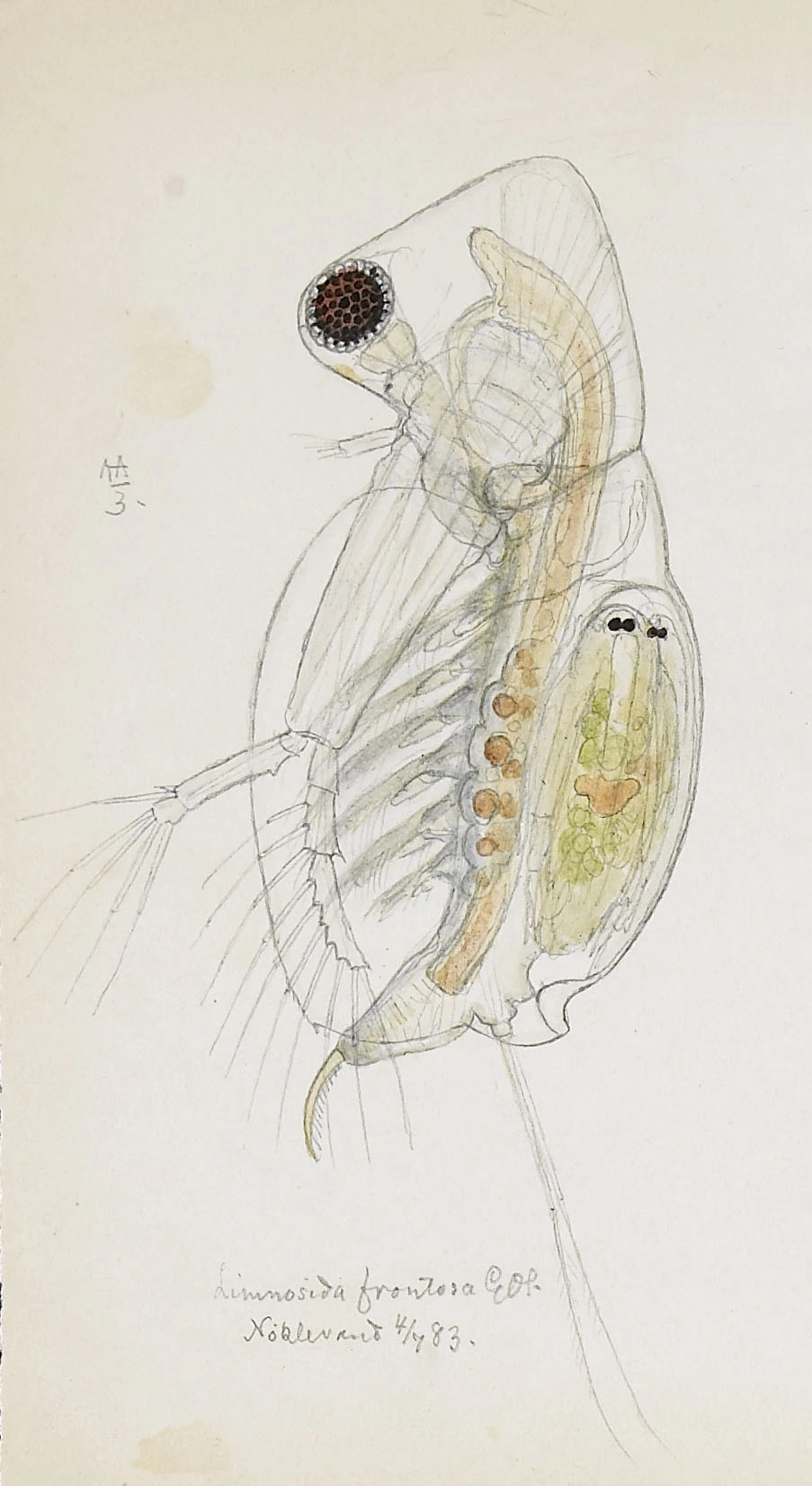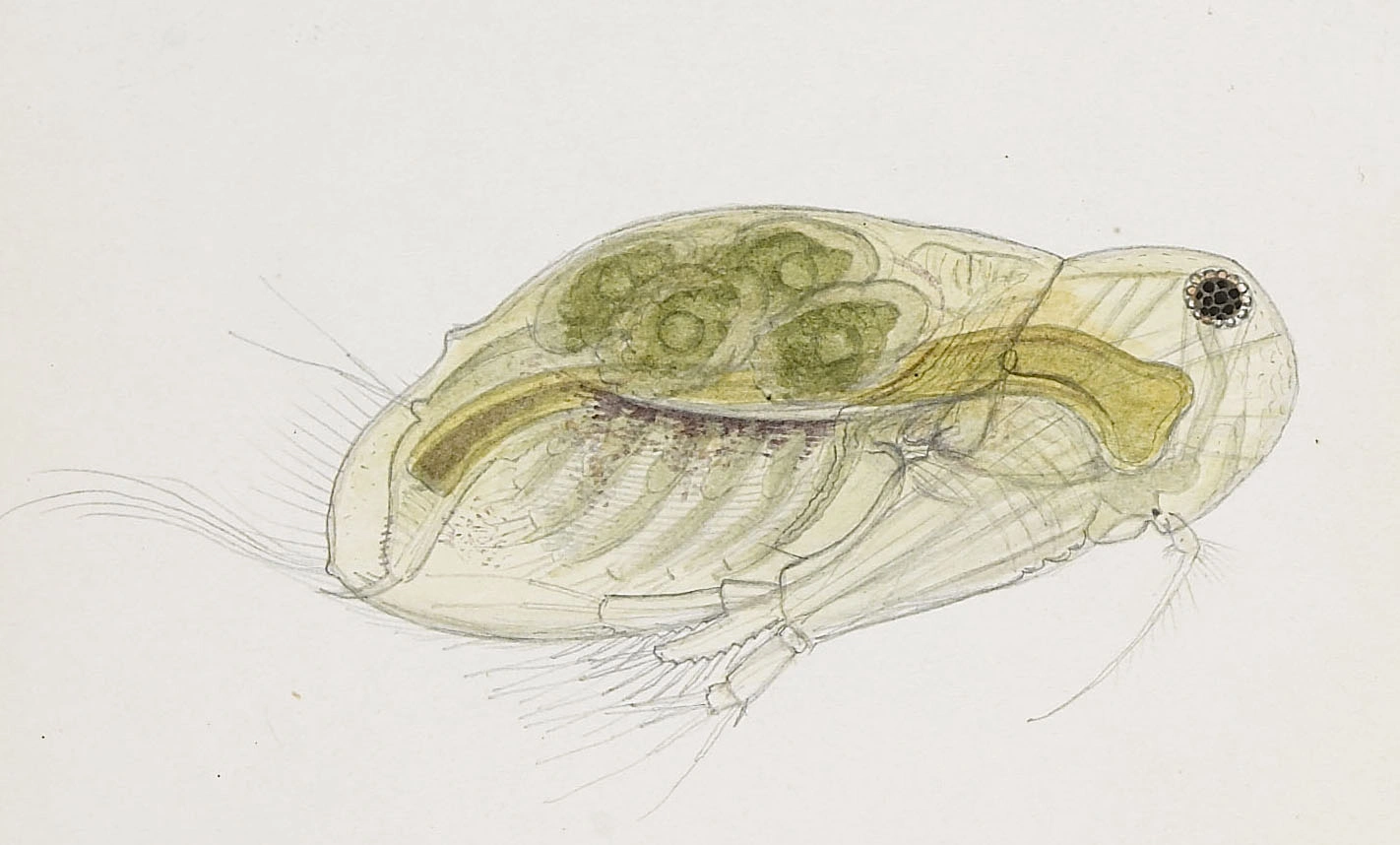Limnosida frontosa
Limnosida frontosa is an easily recognisable species having a head which is almost triangular in shape and by its abdominal claw which has 10 long teeth. It is a true limnetic species, and so far it has only been found in southeast Norway in lakes having a surface area >10 ha.
Key characteristics
Limnosida frontosa (female)
Limnosida frontosa is an easily recognisable species in the family Sididae with a distinct appearance, including a head that makes up about one third of the body. Seen from the side, the head of L. frontosa is almost triangular in shape, with the large compound eye placed in the rostrum like an obtruding part of the forehead. The first pair of antennae is small and fastened to each side of the protruding forehead. The second pair of antennae is, like in D. brachyurum, exceptionally long, while the length and structure of the two branches correspond to that in the genus Sida. Its postabdomen protrudes from the carapace, and the abdominal claw is easily distinguished from other Sididae species in having 10 long teeth attached to the dorsal side. The species is transparent.
Female: Length 1.0–2.0 mm
Male: Length 1.0–1.5 mm
Ecology and distribution
L. frontosa is recorded in nearly 3 % of the investigated lakes, all situated in the south-eastern part of the country. The majority of records are from water bodies situated at 100–300 m a.s.l. According to G.O. Sars L. frontosa is a true limnetic species, and so far it has only been found in lakes having a surface area >10 ha. Studies have shown that the species also occurs in the littoral zone. The records are made in waters with pH between 5,4 and 7,1, while conductivity varies between 2 and 11 mS/m.
| Vitenskapelig navn | < 4,5 | 4,5 - 4,9 | 5,0 - 5,4 | 5,5 - 5,9 | 6,0 - 6,4 | 6,5 - 7,0 | 7,0 - 7,4 | > 7,5 |
|---|---|---|---|---|---|---|---|---|
| 0 | 0 | 0,4 | 1,3 | 5,2 | 4,8 | 1,5 | 0 |
| Vitenskapelig navn | < 1,0 | 1,0 - 1,4 | 1,5 - 1,9 | 2,0 - 2,9 | 3,0 - 3,9 | 4,0 - 4,9 | 5,0 - 6,9 | 7,0 - 9,9 | > 10,0 |
|---|---|---|---|---|---|---|---|---|---|
| 0 | 0 | 0,5 | 0,4 | 1,7 | 3,4 | 10,3 | 2,5 | 1,5 |
| Vitenskapelig navn | < 0,01 | 0,01 - 0,09 | 0,1 - 0,9 | 1,0 - 9,9 | 10,0 - 99 | 100 - 999 | > 1000 |
|---|---|---|---|---|---|---|---|
| 0 | 0 | 0 | 0 | 2,3 | 5,9 | 8,7 |
| Vitenskapelig navn | < 100 | 100-299 | 300-499 | 500-699 | 700-999 | >1000 |
|---|---|---|---|---|---|---|
| 2,9 | 7,4 | 0,4 | 0 | 0 | 0 |
Look-alikes
Diaphanosoma brachyurum and Latona setifera


